All products featured are independently chosen by us. However, SoundGuys may receive a commission on orders placed through its retail links. See our ethics statement.
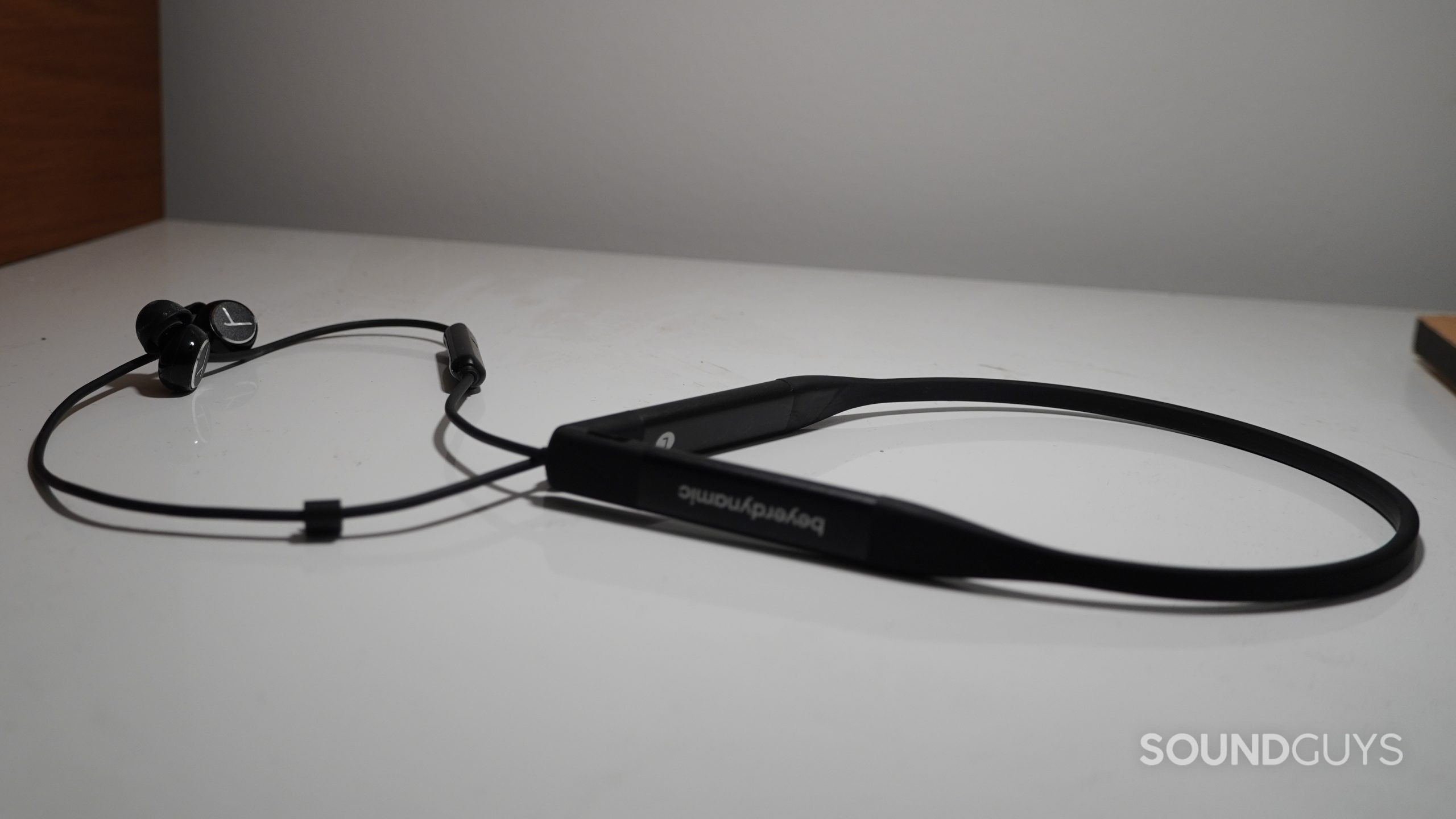
Beyerdynamic Blue BYRD (2nd generation) review
February 1, 2022
Beyerdynamic Blue BYRD (2nd generation)
Neckband earphones may seem like a throwback to a time before true wireless earbuds existed, but the Beyerdynamic Blue BYRD (2nd generation) incorporates many modern features, including aptX Bluetooth codec support, Bluetooth multipoint, and more. Having your earbuds attached to each other might seem a bit old-fashioned, but does the second-gen Blue BYRD keep the design relevant?
Who is the Beyerdynamic Blue BYRD (2nd generation) for?
- Disorganized people who are tired of losing their AirPods can keep things together with the second-gen Blue BYRD.
- Every day listeners can enjoy these comfortable earbuds that they can use while charging.
- Exercise enthusiasts will find the comfortable fit and IPX4 rating useful here.
- Visually impaired users will appreciate the clearly marked earbuds and the tactile differences between the left and right sides on the headset.
What’s it like to use the Beyerdynamic Blue BYRD (2nd generation)?
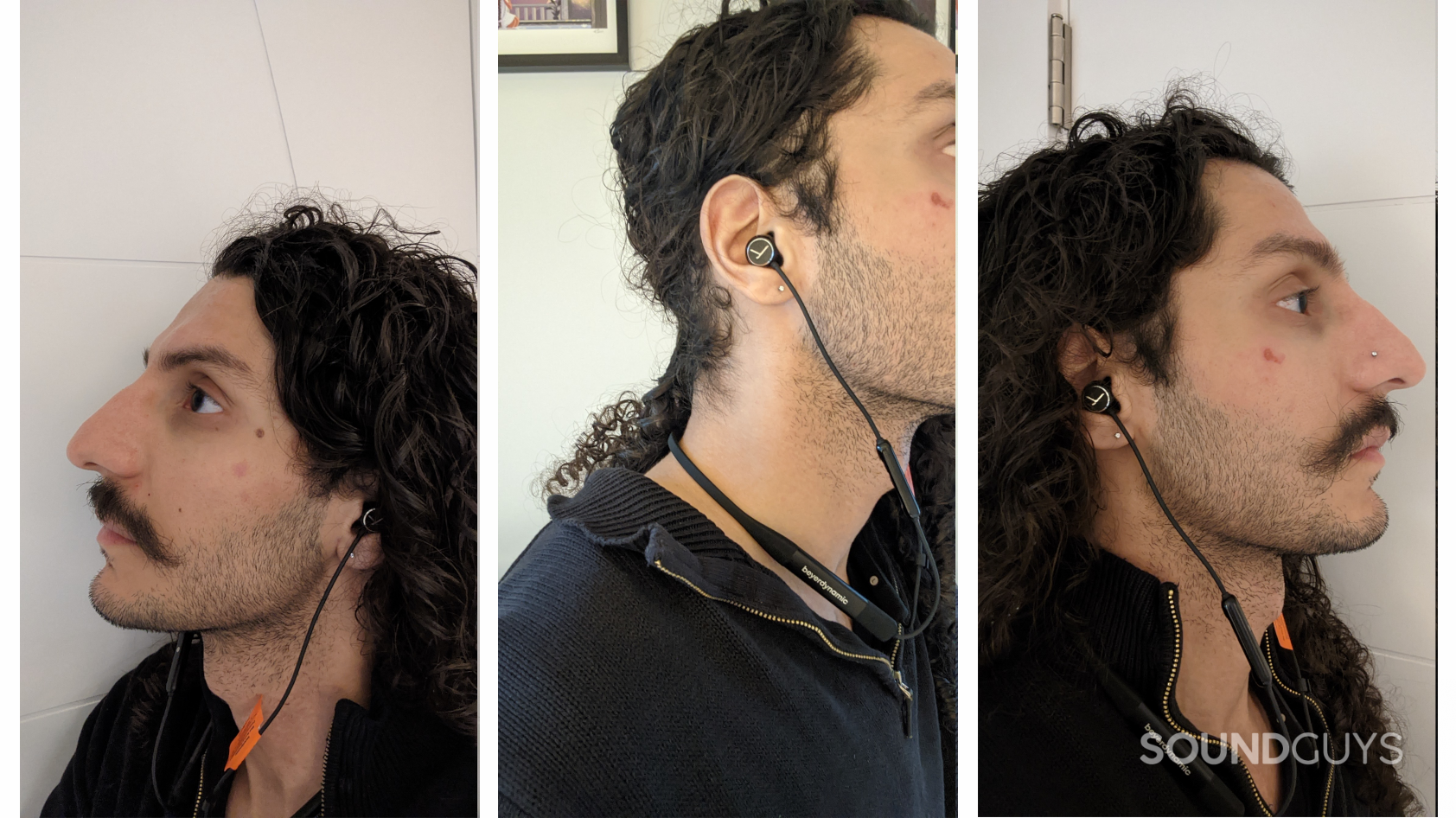
The Beyerdynamic Blue BYRD (2nd generation) consists of two earbuds attached to a band, a design we haven’t seen much since the rise of true wireless earphones. Each bud weighs around 3g, and the total weight of them plus the band is around 31g. That might sound heavy for earbuds, but keep in mind that your collar bone supports most of that weight—each ear will only feel the buds. The weight of the band keeps things in place when walking or jogging, too, though it might start to shift during more intense activities like jumping jacks.
Start here: What makes a good set of earbuds?
Oh, and you can actually break a sweat in this headset now thanks to the IPX4 rating of the Blue BYRD (2nd generation), a major upgrade over its predecessor (which was recalled due to salt water ingress causing extreme overheating). This will likely please workout buffs and commuters because sweat, splashes, and drips aren’t a big concern when wearing these earphones.
Beyerdynamic provides five sizes of ear tips to choose from in the box. The second-largest size is the most comfortable for me, and while it is a little fiddly to get the ear tips onto the pegs of each bud, it’s not anywhere as bad as the 1MORE ColorBuds 2. The ear tips are a bit stiff, but holding them into your ears for a few seconds should mold them into place. The band drapes around the back of your neck so it doesn’t get in the way all that much. However, if you have long hair—especially long and curly hair—the band can get lost in your locks while it rests on your neck. It’s not a major issue, but you will have to scoop your hair out of the way before laying the band down. Also, be mindful of the order you put on a mask. If it’s the last thing to go on, the wires attached to the buds will get weaved inside its ear loops.
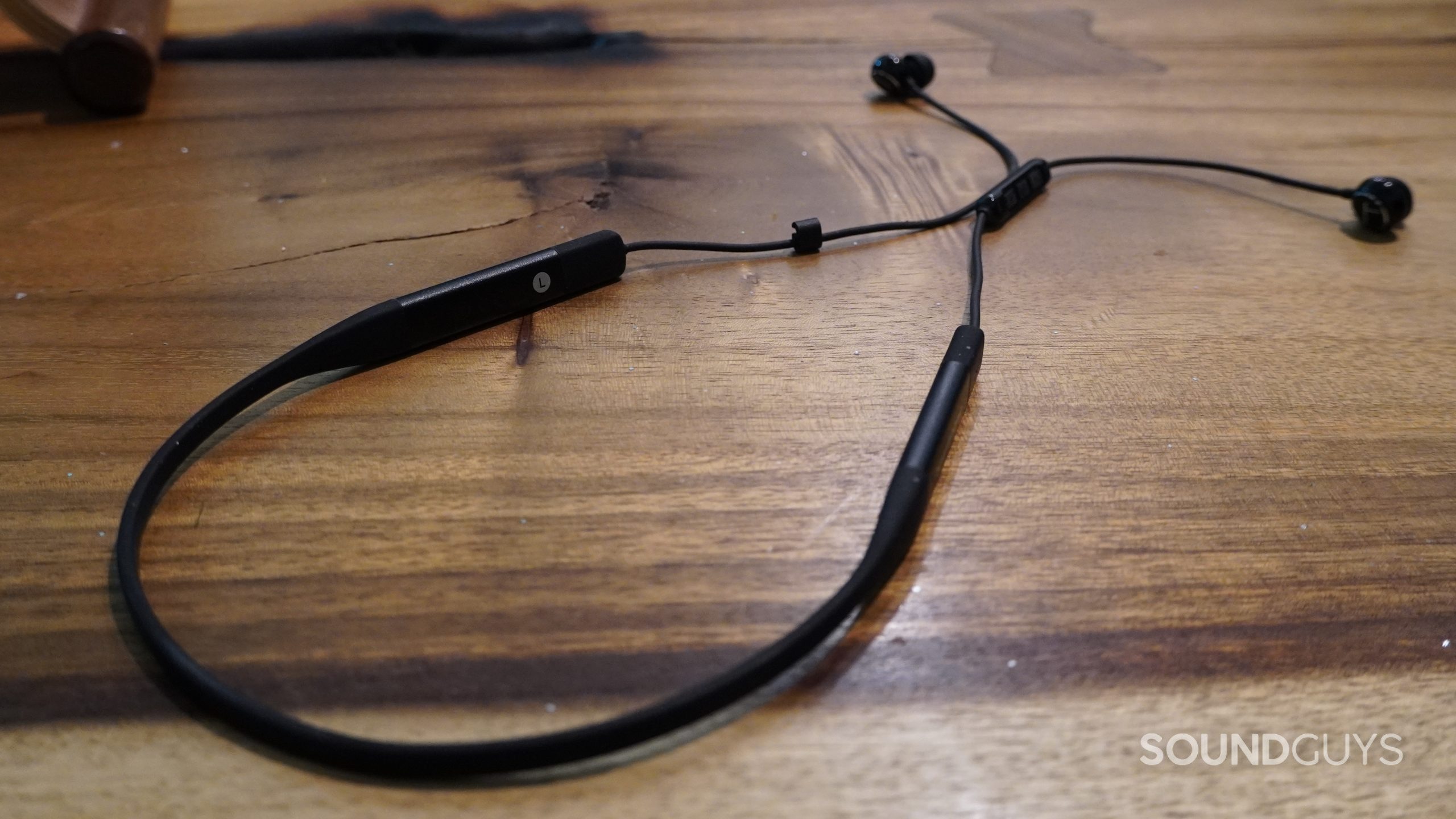
You don’t get a charging case with the Beyerdynamic Blue BYRD (2nd generation). Instead, you get a simple padded carrying case. That’s because the headset itself incorporates a USB-C charging port. Therefore, if you ever lose the case, you can keep using these earbuds, which is good for forgetful people (like me). The case fits into a pants pocket, but it is on the bulky side.
Each bud and either side of the band are marked “L” and “R” with white letters on black plastic. It’s a pretty visible design, plus the control buttons are affixed to the right bud’s wire, as another nod to which side is which. Furthermore, the power button is on the left side of the band. That means you get multiple visual and tactile indicators of each side, which is helpful for people with impaired vision.
How do you control the Beyerdynamic Blue BYRD (2nd generation)?
The headset’s controls are located on the band. The right side has a small box with three control buttons mounted on it, and the left side is where you’ll find the power button. These aren’t touch controls per se, but Beyerdynamic uses multi-function presses to maximize functionality. By default, this is what each control button is set to do:
| Number of presses | + button | - button | ( ) button |
|---|---|---|---|
| Number of presses One | + button Increase volume | - button Decrease volume | ( ) button Start/stop playback or accept/reject call (if ringing) |
| Number of presses Two | + button | - button | ( ) button Jump to next track |
| Number of presses Three | + button | - button | ( ) button Jump to previous track |
| Number of presses Press two times and then hold | + button | - button | ( ) button Fast forward |
| Number of presses Press three times and then hold | + button | - button | ( ) button Rewind |
| Number of presses Press and hold for 2 seconds | + button | - button | ( ) button Activate voice assistant or reject call (if ringing) |
| Number of presses Simultaneous press | + button With ( ) for 2 seconds to activate/deactivate voice messages | - button With ( ) for 4 seconds to reset to factory settings | ( ) button |
Plus, you can use your voice assistant via the mic and button controls on the second-gen Blue BYRD, which is handy when you’re on the go.
The power button may not behave in the way you’d expect, however. Instead of pressing it to turn the earphones on or off, it too has multiple functions:
| Function | Length of press required |
|---|---|
Power on | Two seconds |
Power off | Four seconds |
Turn on in Bluetooth pairing mode | Four seconds |
Furthermore, the LED on the band gives you visual feedback on the current status of your earphones:
| Status | LED |
|---|---|
Charging | Flashes red/yellow/green (in that order from empty to full) |
Fully charged | Solid green |
Switching off | Illuminates red for 1.5 seconds |
Battery nearly depleted | Flashes red rapidly |
Incoming call | Flashes blue rapidly |
Call active | Flashes blue briefly once every 7 seconds |
Media playback active | Flashes blue briefly once every 7 seconds |
Bluetooth pairing mode active | Flashes blue and red alternately |
Bluetooth connection active | Flashes blue briefly once every 7 seconds |
Bluetooth connection lost | Flashes blue briefly once every 3 seconds |
Firmware update mode active | Flashes pink 3 times per second |
Should you download the MIY Beyerdynamic app?
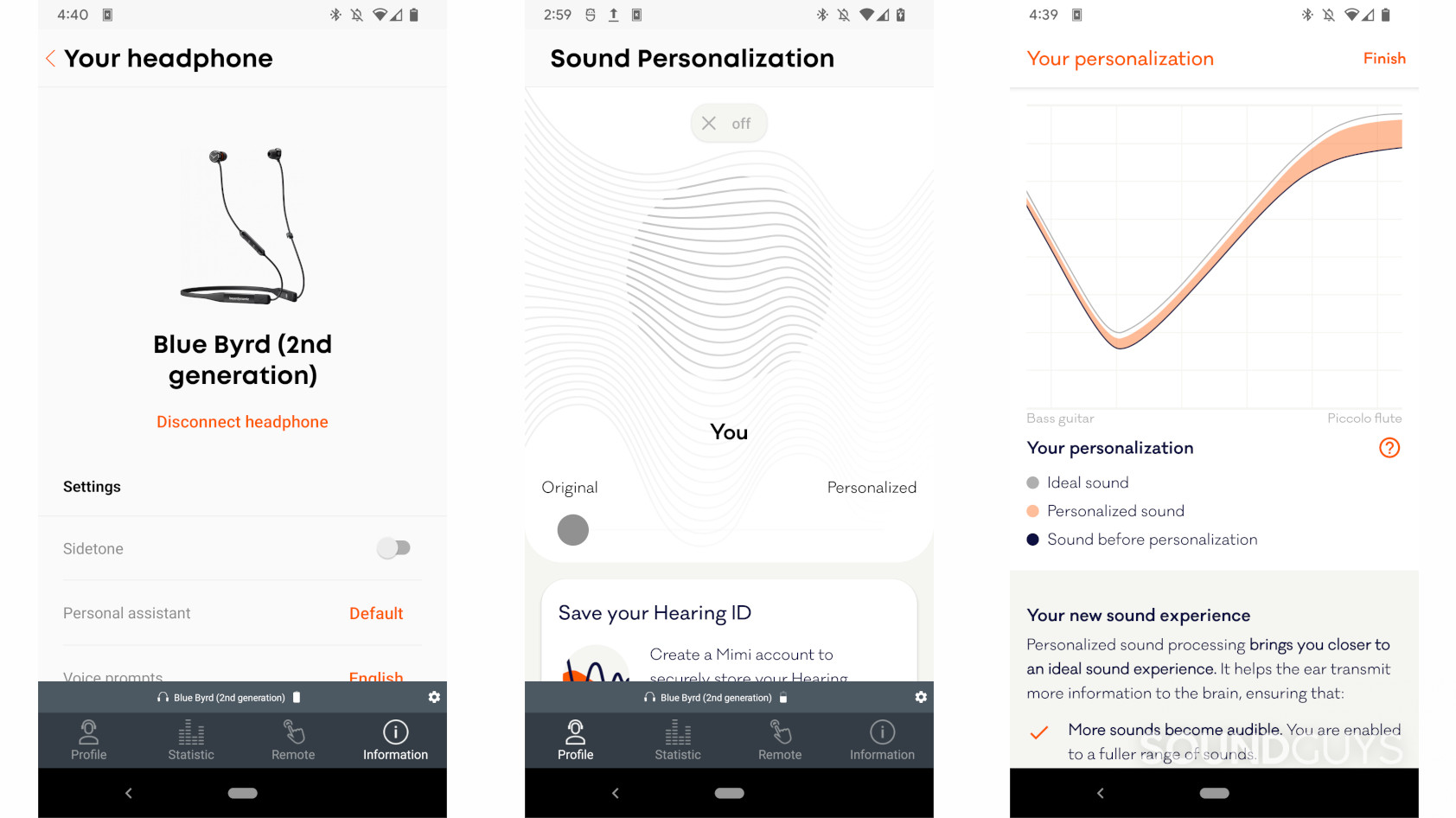
The Beyerdynamic Blue BYRD (2nd generation) uses the MIY Beyerdynamic app (iOS and Android) to install software updates, change settings, and more. It’s a good idea to install it. When you first start the app, you will be asked to complete your Hearing ID, Beyerdynamic’s sound personalization feature, on that device. By default, your Hearing ID lives only on that one device—having it available elsewhere means creating an account with Beyerdynamic, called Mimi. Though both are optional, the Hearing ID test is actually useful and you can retake it as desired.
The app splits its equalizer function across two features. Under the “Information” tab you can find equalizer presets, but Hearing ID is how you access a more personalized sound profile. The test has you strain to listen for high-pitched beeps through lots of noise. Beyerdynamic recommends you do this in a quiet, distraction-free room, and that’s a good idea. The end result is used to tune the headphones to your ears and your preferences.
You can slide between the default sound and personalized sound, but there's no custom EQ option.
It’s not an all-or-nothing proposition, however. You can adjust a slider in the app’s “Profile” tab between “Original” and “Personalized” to mix the default operation profile with your own, too. Plus, a chart gets created with your personalized profile compared to the headset’s default. While this is certainly a novel approach to creating unique listening experiences, I prefer a proper equalizer for fine-toothed adjustments. It’s also a bit of a quirk that many other features get tucked into the “Information” tab only after tapping on “Your headphone” in there, such as voice assistant controls.
What Bluetooth codecs does the Beyerdynamic Blue BYRD (2nd generation) support?
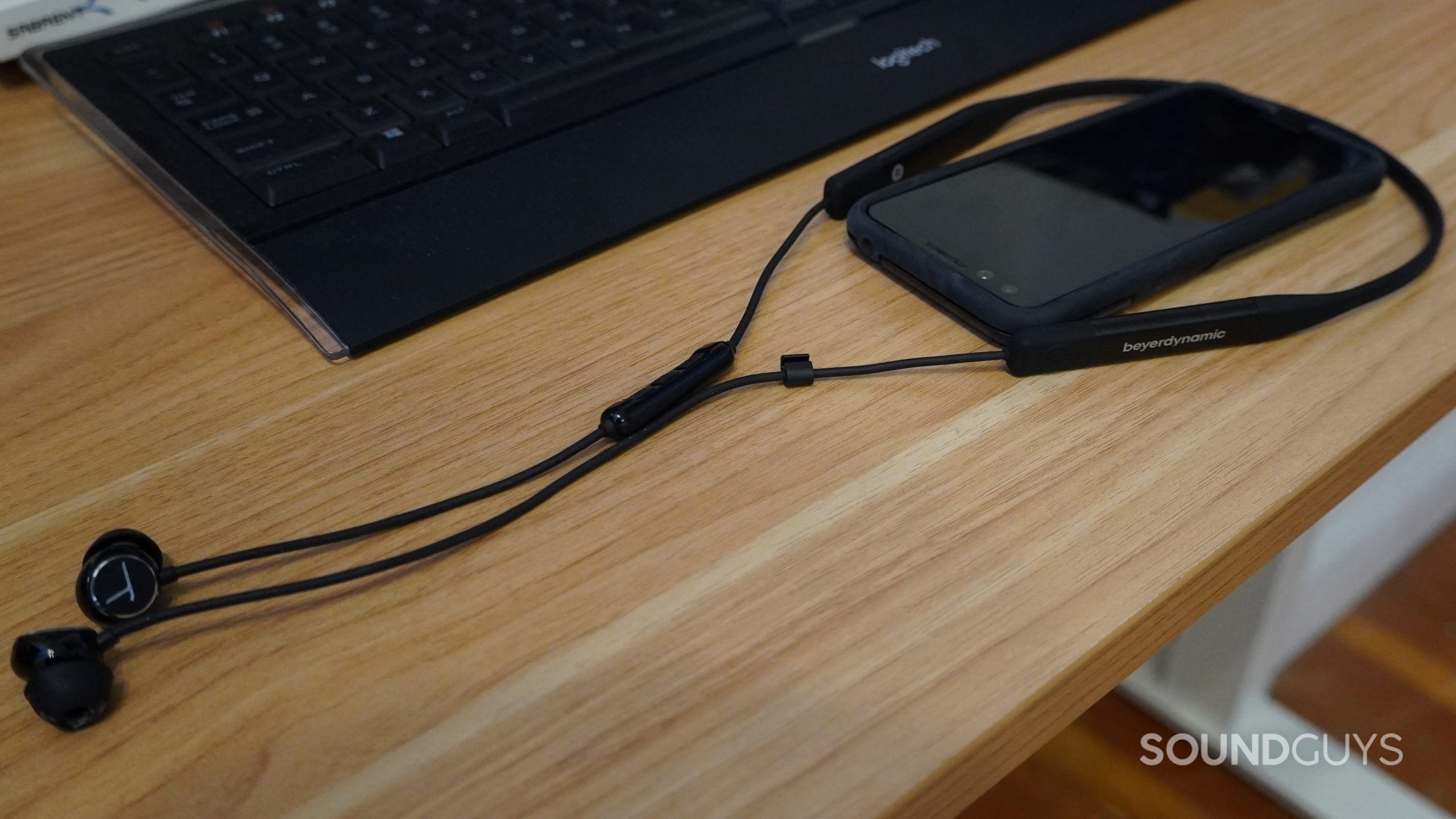
The Beyerdynamic Blue BYRD (2nd generation) uses Bluetooth 5.2 and supports the aptX, aptX adaptive, SBC, and AAC Bluetooth codecs. It supports Bluetooth multipoint, too. As mentioned in the section on controls above, you must hold the power button for a few seconds to put the buds into Bluetooth syncing mode.
Because of this, the process for getting multipoint set up might be a bit unexpected, but it’s not too complicated:
- Sync the Beyerdynamic Blue BYRD (2nd generation) with the first device.
- Switch off Bluetooth on the first device.
- Turn off the headset.
- Turn the headset back on in pairing mode.
- Connect to the second device.
- Reactivate Bluetooth on the first device.
That might seem wonky, but you only have to do it once per device for up to eight devices. The Beyerdynamic Blue BYRD (2nd generation) will remember each device and connect itself automatically afterward if two of them are within its range.
See also: The best aptX Bluetooth headphones
Beyerdynamic claims these earphones can get up to 10 meters of range, but that’s in ideal conditions. Still, the connection remains solid with your phone in a pants pocket, for instance. You can also use one bud at a time because the earphones always sync to Bluetooth together. However, if your content is in mono, you’ll have to insert whichever side the content plays on manually—unless you use third-party software to swap the channels.
How long does the battery last on the Beyerdynamic Blue BYRD (2nd generation)?
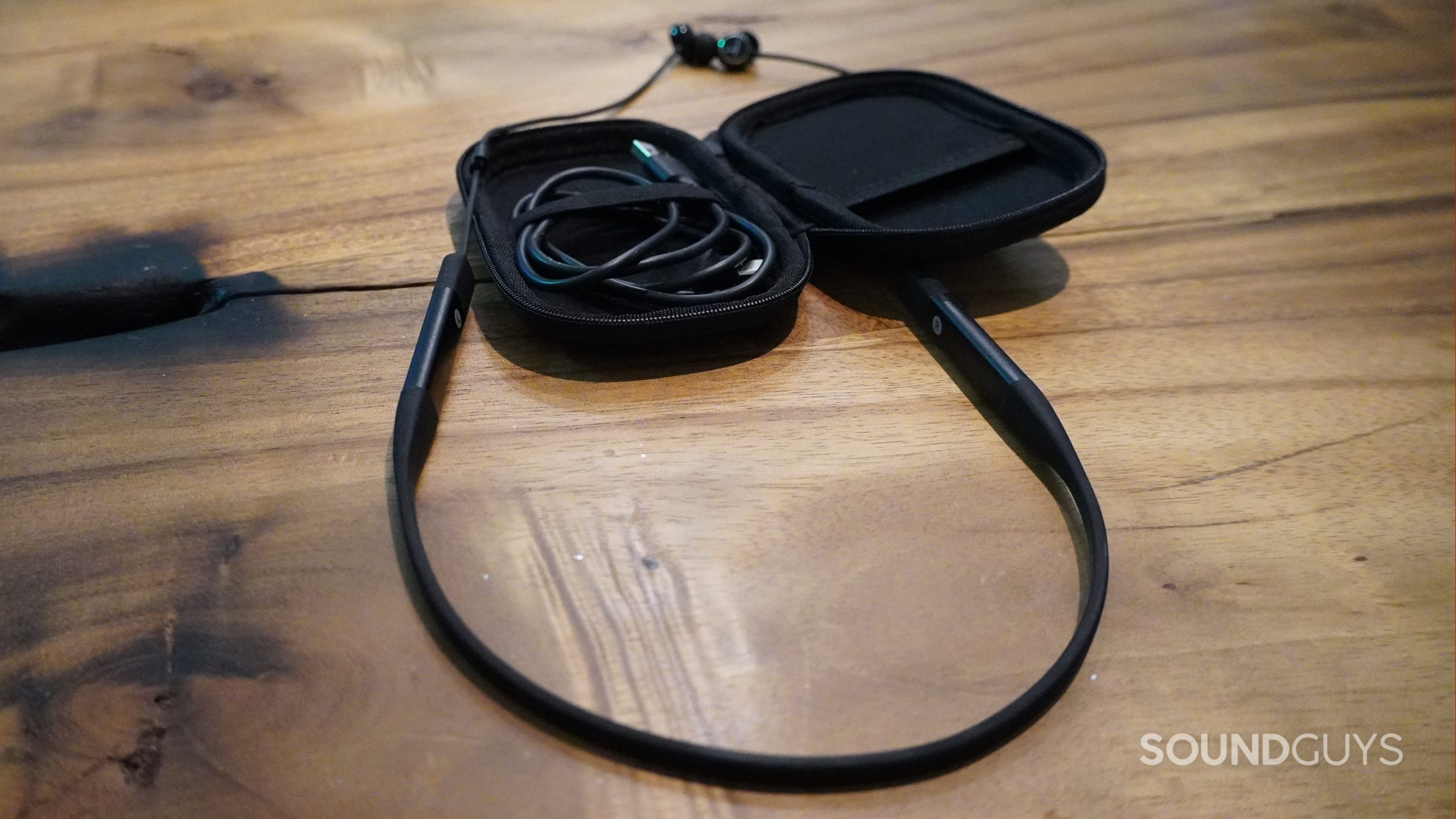
Historically, one of the things hindering the development of true wireless earbuds was battery technology, and even today, many models of true wireless earbuds still can’t match the claimed 14-hour battery life of the Beyerdynamic Blue BYRD (2nd generation). Our standard headphone battery test uses music played back continuously with a 75dB(SPL) maximum output level measured at the eardrum of our test head. The Beyerdynamic Blue BYRD (2nd generation) lasted 11 hours, 53 minutes. That is still pretty good, but it falls short of the manufacturer’s claim.
How do you charge the Blue BYRD (2nd gen)?
Beyerdynamic throw in a USB-A to USB-C charging cable but no power adapter. You don’t get a charging case because the USB-C port is on the earphones’ band. Furthermore, you can keep the headset plugged in and charging while listening to content—true wireless buds can’t claim that feature, and neither can many models of wireless over-ear headphones.
As mentioned earlier an LED on the right side of the band gives you visual feedback of the current battery status. There is an audible update on it every time you turn on the earphones, too.
How well does the Beyerdynamic Blue BYRD (2nd generation) block out noise?
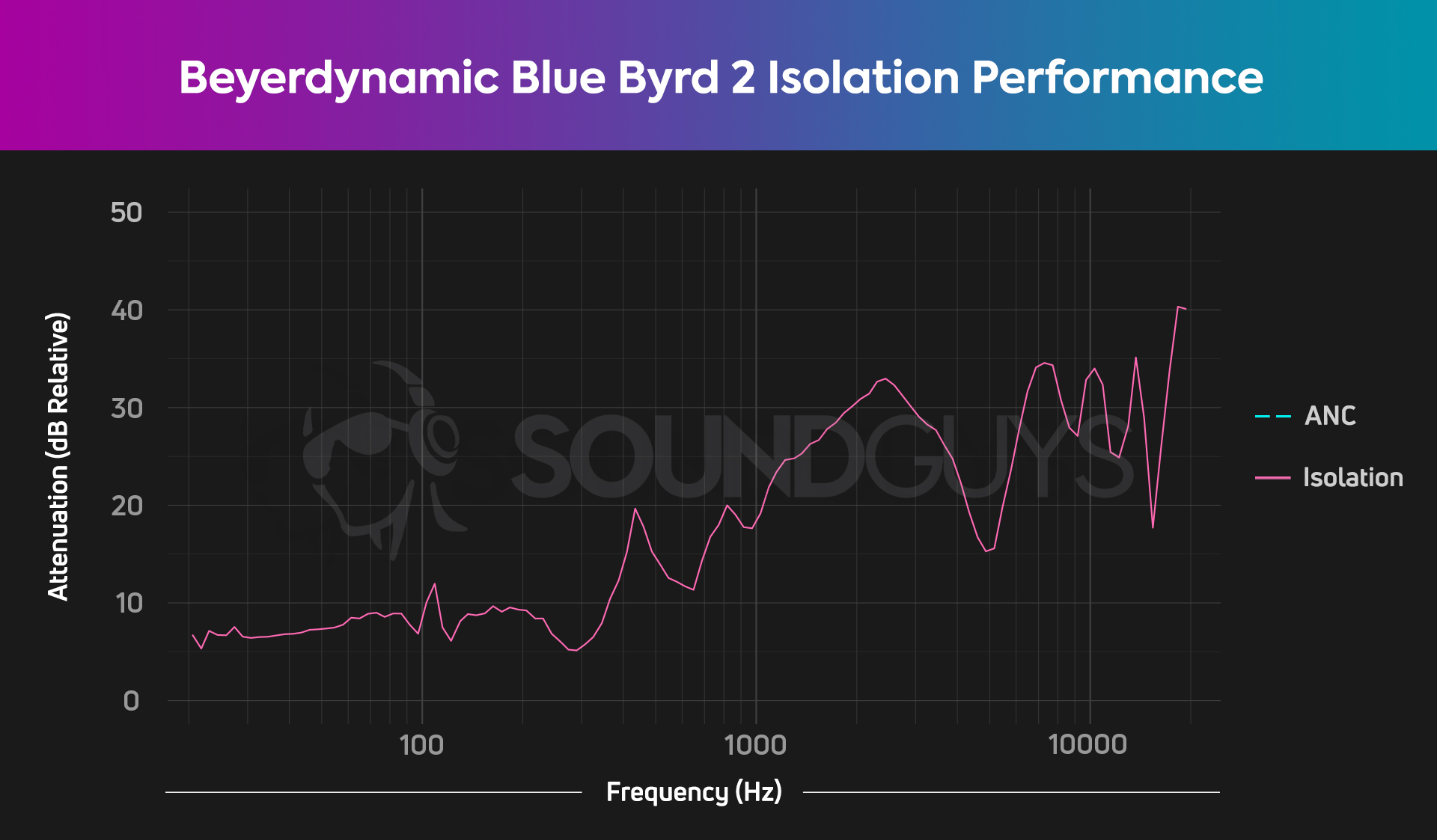
The Beyerdynamic Blue BYRD (2nd generation) does not have active noise cancellation (ANC), so it relies on passive isolation to block out external distractions. That means your listening experience depends on getting a good fit from the included ear tips. Under ideal conditions, you get pretty decent isolation. These earbuds tend to block out more highs than lows—as is typical of isolation performance without noise canceling—but overall the headset blocks out all sounds to some degree.
Good isolation is important because it helps protect you from hearing loss by making you less likely to turn up the volume to hear your tunes. The MIY Beyerdynamic app also includes a dosage meter to monitor how long you spend listening to content and how loud it is, which is handy for staying in safe territory.
However, the wires and band are a potential source of noise. If they bump into something or drape across your shirt, you might notice a “scraping” or “shuffling” noise. Once upon a time, we all lived with this, but in the age of true wireless everything, it might come as a slight shock to hear it again. You get used to it eventually, and it’s less noticeable when you’re playing music versus listening to audiobooks or podcasts.
How does the Beyerdynamic Blue BYRD (2nd generation) sound?
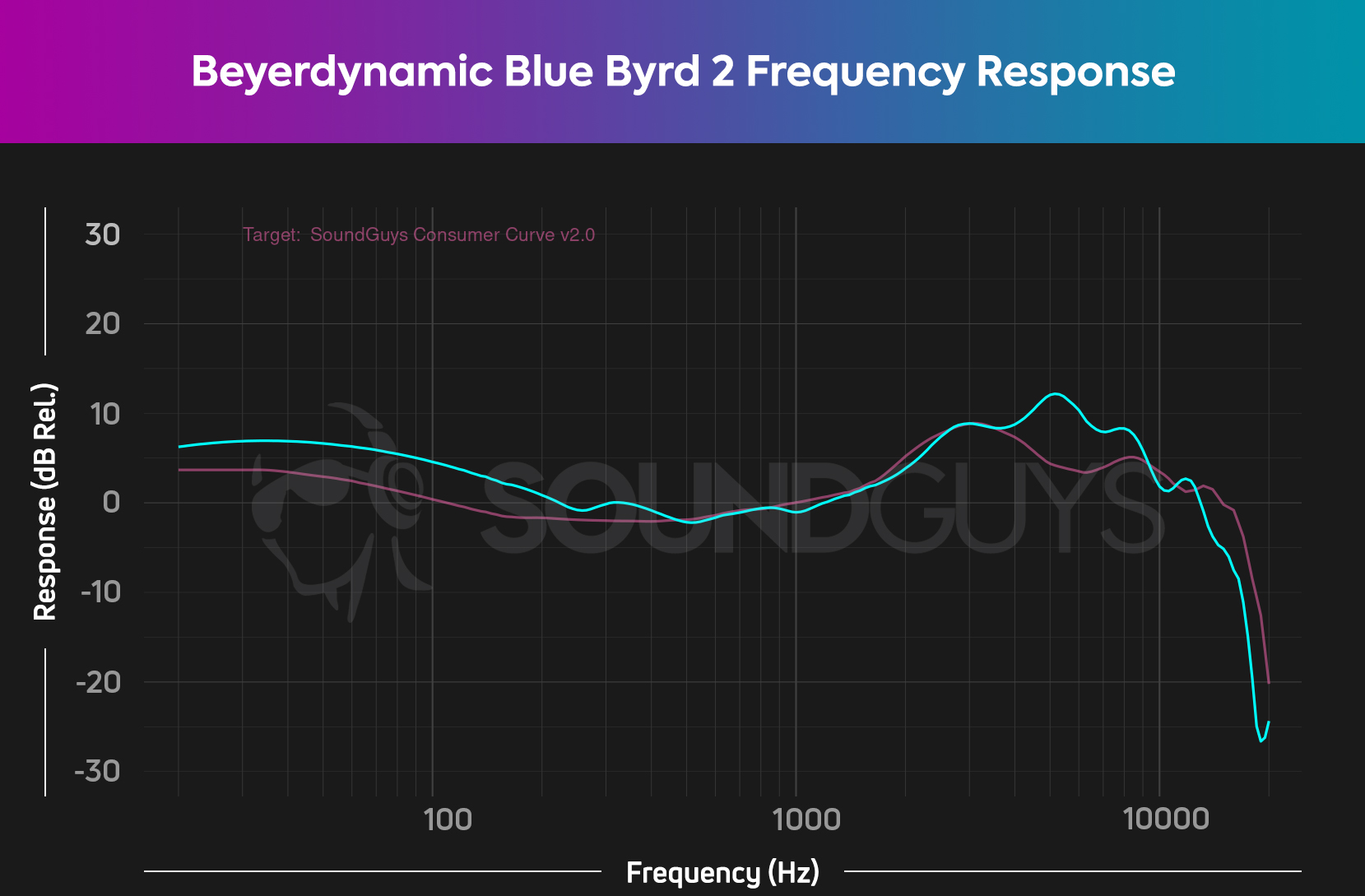
The Beyerdynamic Blue BYRD (2nd generation) has a consumer-pleasing sound profile, thanks to the fact that it actually boosts lows above the target compared to the SoundGuys‘ house curve. That’s good news for bass-heads, and the highs see a bump, too. Plus, unlike many models of true wireless earbuds, the Beyerdynamic Blue BYRD (2nd generation) sticks pretty close to our target in the mids.
Lows, mids, and highs
The boosted lows and highs give you a good pop listening experience. A song like Hot Mango Chutney Sauce by Meesha Shafi sounds fun and bassy, while highs in the forms of synthesizer notes and bells also come through clearly enough. However, because the two ends of the spectrum are so emphasized, vocals in the mids might seem slightly quieter than the instruments. It’s not anywhere near a deal breaker though, and likely will go unnoticed during daily listening on a bus.
The Beyerdynamic Blue BYRD (2nd generation) isn’t bad at reproducing mids, far from it. In fact, it reproduces mids very accurately. As such, primarily vocal content is quite listenable, like audiobooks or podcasts. Furthermore, music that focuses on the human voice is also reproduced well. For instance, the qawwali Mast Mast Dam Mast as sung by Ustad Nusrat Fateh Ali Khan has his vocals audible across their full range, while the drums and harmoniums add punctuation nicely.
Overall, the Beyerdynamic Blue BYRD (2nd generation)’s generally pleasing sound profile should satisfy most listeners. Though there is no fine-toothed equalizer, you can customize the sound to your tastes somewhat, too.
Can you use the Beyerdynamic Blue BYRD (2nd generation) for phone calls?
The Beyerdynamic Blue BYRD (2nd generation) has a microphone located in the same box where you’ll find the control buttons on the right-hand bud’s wire, so you can use it for phone calls. This puts the mic conveniently close to your mouth, too. In ideal conditions, your voice will come through clearly. However, in office environments, keyboard clacks, shuffling papers, and other sources of noise will obscure some of your words. Listen for yourself:
Beyerdynamic Blue BYRD (2nd generation) microphone sample (Ideal):
Beyerdynamic Blue BYRD (2nd generation) microphone sample (Office):
How does the microphone sound to you?
Should you buy the Beyerdynamic Blue BYRD (2nd generation)?

If you want a set of earphones that more or less “just works,” the Beyerdynamic Blue BYRD (2nd generation) makes for a solid choice—even during the reign of true wireless earbuds. While the band design is a throwback to an earlier era, Beyerdynamic includes many features that listeners have come to expect such as the aptX Bluetooth codec and multipoint support, and the battery performance doesn’t hurt either.
You might like: The best Bluetooth neckband earbuds
With its clearly delineated left and right sides, this headset is a good option for people with impaired vision. You may find the band and earbuds’ wires a bit annoying, however—especially at first. Plus, the microphone’s lack of effective noise canceling and the less than fully-featured EQ in the app are both a bit of a bummer.

The Beyerdynamic Blue product family has seen two launches: the original Blue BYRD in early 2019 and the Blue BYRD in late 2021. This indicates an approximate cycle of 2 years and 8 months between generations. As we are now well past that interval, a new model would typically be expected by late 2024. Since it is already 2025, this indicates a significant delay or disruption in the previous launch pattern. Influences such as market shifts or extended product life cycles could be factors. We do not project a next launch window at this moment, but we remain committed to monitoring developments to refine our forecast.
What should you get instead of the Beyerdynamic Blue BYRD (2nd generation)?
The field for wireless earphones on a band has grown thin ever since the rise of true wireless earbuds, but there are still alternatives floating around. The Sennheiser IE 100 PRO Wireless is slightly less comfortable than the Beyerdynamic Blue BYRD (2nd generation), and it does not have any sort of IP rating or comparable battery life. However, it features similar Bluetooth codec support and audio quality.
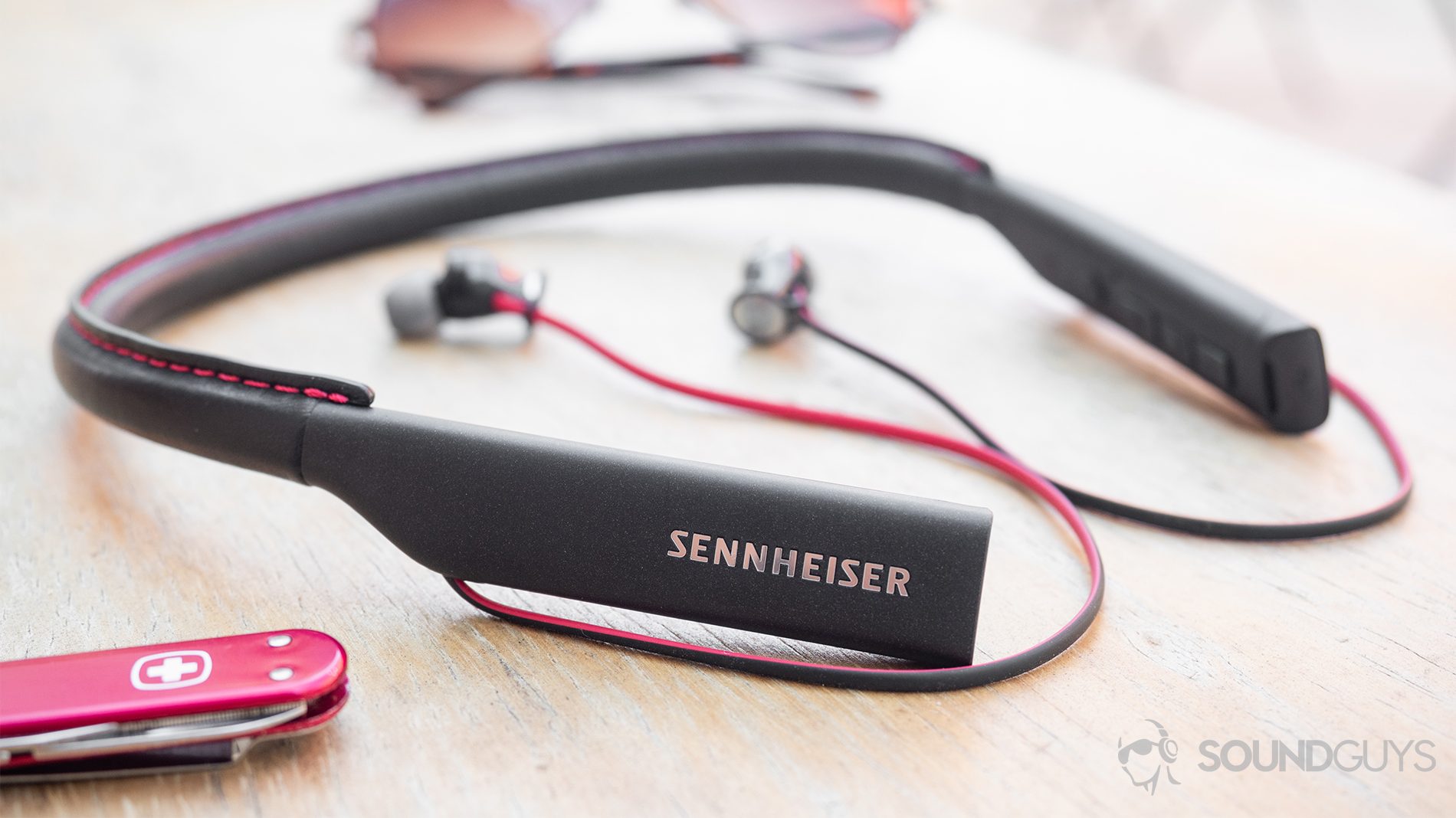
Similarly, the Sennheiser HD1 In-Ear gets you the same Bluetooth codec support but slightly less stellar audio quality. The microUSB charging might be a bigger retro throwback than you’re looking for, however.
On the opposite end of the price spectrum, there’s the Jabra Elite Active 45e. It is far cheaper than the Beyerdynamic Blue BYRD (2nd generation), but it does not have nearly comparable sound quality. Still, it suits workout fans well thanks to its IP67 rating, but once more you must use microUSB to charge this headset.
Frequently asked questions about the Beyerdynamic Blue BYRD (2nd generation)
The Soul BYRD is a wired pair of earbuds with a great, lightweight build and integrated mic/control module. The microphone sounds quite good on the Soul BYRD, so long as you can prevent it from rubbing against your clothes.
The Blue BYRD (2nd generation) costs more than double that of the Soul BYRD’s going rate of $69 USD. If you must have Bluetooth with high-quality codec support, the Blue BYRD makes more sense. Otherwise, we still love the Soul BYRD years later.
While true wireless earbuds have their advantages for exercise and convenience, there are still plenty of reasons to get a pair of neckbuds. For one, you won’t lose the Blue BYRD (as easily) as you might a pair of AirPods or Galaxy Buds. What’s more, you generally get better battery life out of neckbuds compared to true wireless earbuds because the latter has smaller Li-ion battery cells that deplete quicker.
Thank you for being part of our community. Read our Comment Policy before posting.